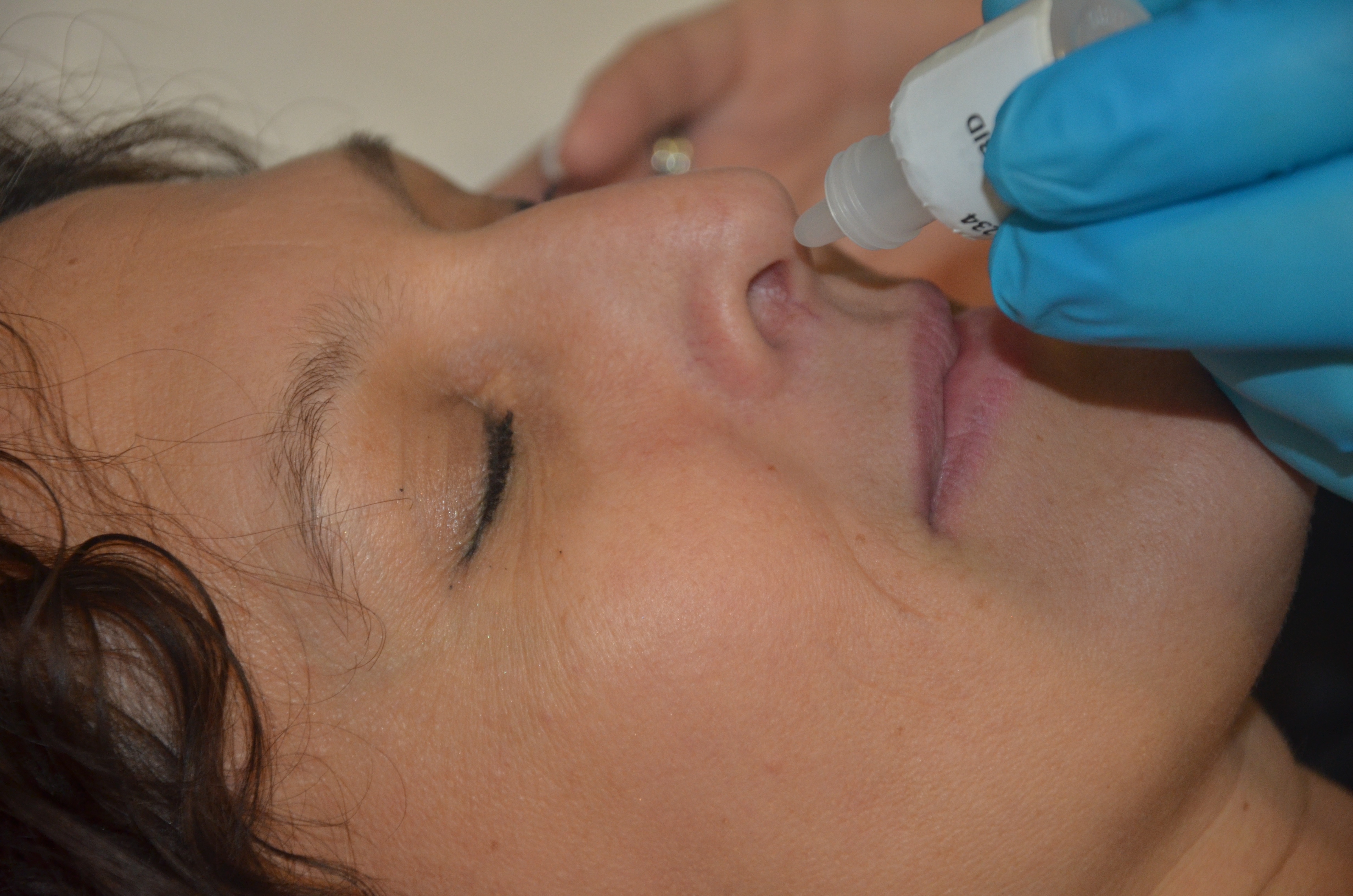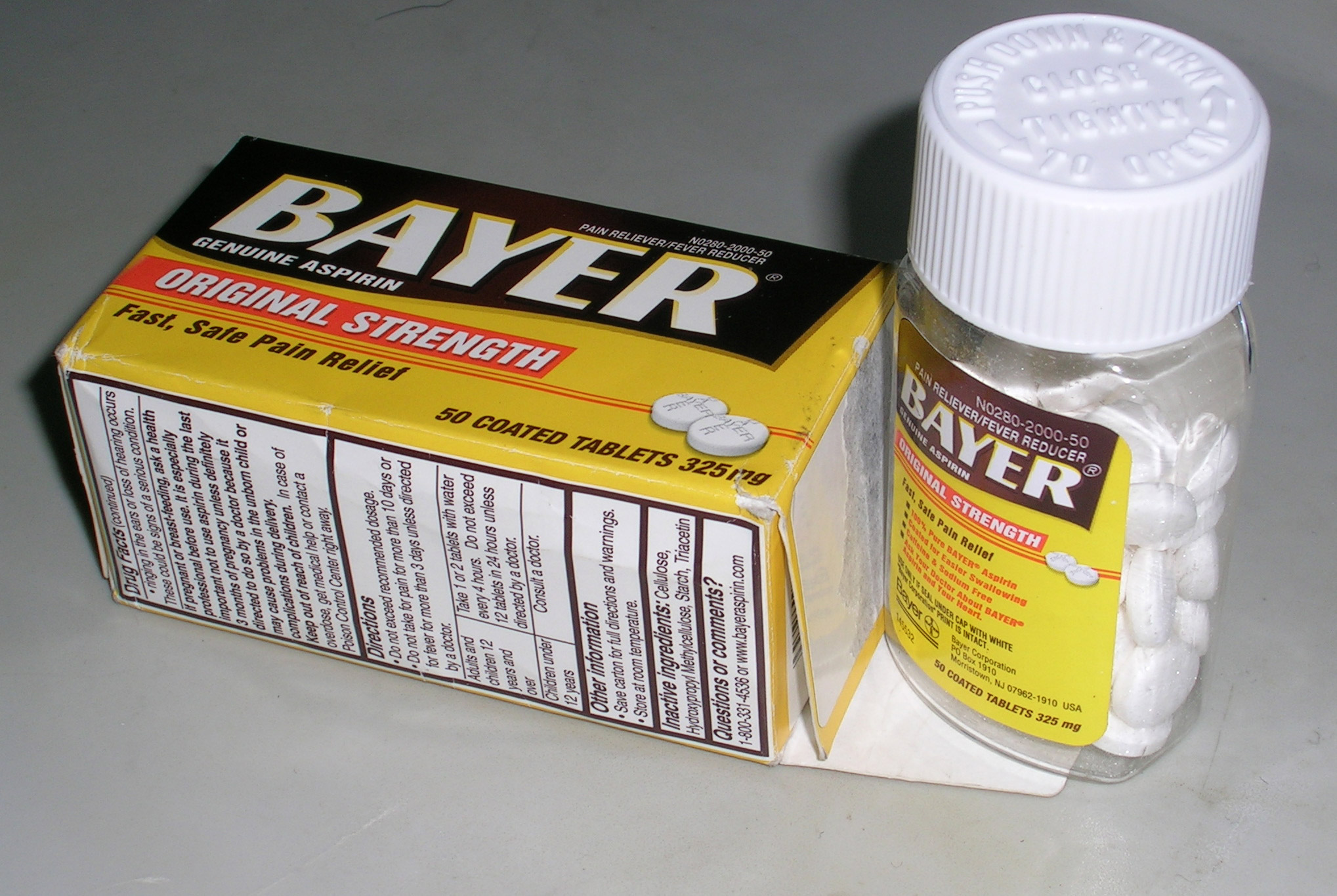|
Brimonidine Timolol
Brimonidine is a medication used to treat open-angle glaucoma, ocular hypertension, and rosacea. In rosacea it improves the redness. It is used as eye drops or applied to the skin. Common side effects when used in the eyes include itchiness, redness, and a dry mouth. Common side effects when used on the skin include redness, burning, and headaches. More significant side effects may include allergic reactions and low blood pressure. Use in pregnancy appears to be safe. When applied to the eye it works by decreasing the amount of aqueous humor made while increasing the amount that drains from the eye. When applied to the skin it works by causing blood vessels to contract. Brimonidine was patented in 1972 and came into medical use in 1996. It is available as a generic medication. In 2020, it was the 175th most commonly prescribed medication in the United States, with more than 3million prescriptions. Medical uses Brimonidine is indicated for the lowering of intraocular pressure ... [...More Info...] [...Related Items...] OR: [Wikipedia] [Google] [Baidu] |
Topical Medication
A topical medication is a medication that is applied to a particular place on or in the body. Most often topical medication means application to body surfaces such as the skin or mucous membranes to treat ailments via a large range of classes including creams, foams, gels, lotions, and ointments. Many topical medications are epicutaneous, meaning that they are applied directly to the skin. Topical medications may also be inhalational, such as asthma medications, or applied to the surface of tissues other than the skin, such as eye drops applied to the conjunctiva, or ear drops placed in the ear, or medications applied to the surface of a tooth. The word ''topical'' derives from Greek τοπικός ''topikos'', "of a place". Justification Topical drug delivery is a route of administering drugs via the skin to provide topical therapeutic effects. As skin is one of the largest and most superficial organs in the human body, pharmacists utilise it to deliver various dr ... [...More Info...] [...Related Items...] OR: [Wikipedia] [Google] [Baidu] |
Adrenergic Agonist
An adrenergic agonist is a drug that stimulates a response from the adrenergic receptors. The five main categories of adrenergic receptors are: α1, α2, β1, β2, and β3, although there are more subtypes, and agonists vary in specificity between these receptors, and may be classified respectively. However, there are also other mechanisms of adrenergic agonism. Epinephrine and norepinephrine are endogenous and broad-spectrum. More selective agonists are more useful in pharmacology. An ' agent is a drug, or other substance, which has effects similar to, or the same as, epinephrine (adrenaline). Thus, it is a kind of sympathomimetic agent. Alternatively, it may refer to something which is susceptible to epinephrine, or similar substances, such as a biological receptor (specifically, the adrenergic receptors). Receptors Directly acting adrenergic agonists act on adrenergic receptors. All adrenergic receptors are G-protein coupled, activating signal transduction pathways. The G-prot ... [...More Info...] [...Related Items...] OR: [Wikipedia] [Google] [Baidu] |
Imidazolines
Imidazoline is a class of heterocycles formally derived from imidazole Imidazole (ImH) is an organic compound with the formula C3N2H4. It is a white or colourless solid that is soluble in water, producing a mildly alkaline solution. In chemistry, it is an aromatic heterocycle, classified as a diazole, and has non ...s by the reduction of one of the two double bonds. Three isomers are known, 2-imidazolines, 3-imidazolines, and 4-imidazolines. The 2- and 3-imidazolines contain an imine center, whereas the 4-imidazolines contain an alkene group. The 2-Imidazoline group occurs in several drugs.Liu, H. and Du, D.-M. (2009), Recent Advances in the Synthesis of 2-Imidazolines and Their Applications in Homogeneous Catalysis. Adv. Synth. Catal., 351: 489–519. doi: 10.1002/adsc.200800797 References {{Organic-chemistry-stub ... [...More Info...] [...Related Items...] OR: [Wikipedia] [Google] [Baidu] |
AbbVie Brands
AbbVie is an American publicly traded biopharmaceutical company founded in 2013. It originated as a spin-off of Abbott Laboratories. History On October 19, 2011, Abbott Laboratories announced its plan to separate into two publicly traded companies. The new Abbott Laboratories would specialize in diversified products including medical devices, diagnostic equipment and nutrition products, while AbbVie would operate as a research-based pharmaceutical manufacturer. The separation was effective January 1, 2013, and AbbVie was officially listed on the New York Stock Exchange (ABBV) on January 2, 2013. According to Miles White, CEO at the time, the purpose of the split was to allow markets to value the two businesses separately. Some investors were concerned that the split was done to protect the value of the device business from the loss of value facing the drug division due to the imminent expiration of patents on Humira, which accounted for about half of the drug division's revenue. ... [...More Info...] [...Related Items...] OR: [Wikipedia] [Google] [Baidu] |
Tetryzoline
Tetryzoline (also known as tetrahydrozoline) is a drug used in some over-the-counter eye drops and nasal sprays. Tetryzoline was patented in 1954, and came into medical use in 1959. Side effects Tetryzoline eye drops may cause blurred vision, eye irritation and dilated pupils. Tetryzoline is not suitable for prolonged use as its vasoconstrictive effects within the eye eventually decrease or stop. If tolerance to the drug has developed, ceasing its use may cause a rebound effect and ''increase'' redness of the eyes — a vasodilatory effect. Intranasal use of tetryzoline may cause transient burning, stinging, or dryness of the mucosa and sneezing. Prolonged intranasal use often causes opposite effects in the form of rebound congestion with effects such as chronic redness, swelling and rhinitis. Prolonged use thus may result in overuse of the drug. In children, it might cause profound sedation. Overdose Overdose most often causes slow heart rate. Respiratory depression, ... [...More Info...] [...Related Items...] OR: [Wikipedia] [Google] [Baidu] |
Visine
Visine is a brand of eye drops produced by Johnson & Johnson. Johnson & Johnson acquired Visine, along with Pfizer's entire consumer healthcare portfolio, in December 2006. In some countries it is called Vispring. Visine Original The active ingredients in the original Visine formulation are potassium chloride and tetrahydrozoline hydrochloride which is a vasoconstrictor, and therefore constricts the eye's superficial blood vessels. Administration Visine is administered topically with 1 to 2 drops applied to the affected eye(s) up to 4 times daily. Adverse effects *Those using Visine Original frequently report stinging and burning upon application. *Use of this product can cause a rebound effect causing the redness to worsen. Prolonged use can cause blood vessels to be dilated for an extended period of time. Use should be limited unless specified by a doctor. *A red eye may often be indicative of more serious underlying ocular condition; simply reducing blood flow to the ... [...More Info...] [...Related Items...] OR: [Wikipedia] [Google] [Baidu] |
Sclera
The sclera, also known as the white of the eye or, in older literature, as the tunica albuginea oculi, is the opaque, fibrous, protective, outer layer of the human eye containing mainly collagen and some crucial elastic fiber. In humans, and some other vertebrates, the whole sclera is white, contrasting with the coloured iris, but in most mammals, the visible part of the sclera matches the colour of the iris, so the white part does not normally show while other vertebrates have distinct colors for both of them. In the development of the embryo, the sclera is derived from the neural crest. In children, it is thinner and shows some of the underlying pigment, appearing slightly blue. In the elderly, fatty deposits on the sclera can make it appear slightly yellow. People with dark skin can have naturally darkened sclerae, the result of melanin pigmentation. The human eye is relatively rare for having a pale sclera (relative to the iris). This makes it easier for one individual to ... [...More Info...] [...Related Items...] OR: [Wikipedia] [Google] [Baidu] |
Over The Counter
Over-the-counter (OTC) drugs are medicines sold directly to a consumer without a requirement for a prescription from a healthcare professional, as opposed to prescription drugs, which may be supplied only to consumers possessing a valid prescription. In many countries, OTC drugs are selected by a regulatory agency to ensure that they contain ingredients that are safe and effective when used without a physician's care. OTC drugs are usually regulated according to their active pharmaceutical ingredient (API) rather than final products. By regulating APIs instead of specific drug formulations, governments allow manufacturers the freedom to formulate ingredients, or combinations of ingredients, into proprietary mixtures. The term ''over-the-counter'' (''OTC'') refers to a medication that can be purchased without a medical prescription. In contrast, prescription drugs require a prescription from a doctor or other health care professional and should only be used by the prescribed ... [...More Info...] [...Related Items...] OR: [Wikipedia] [Google] [Baidu] |
Bausch And Lomb
Bausch + Lomb is an eye health products company based in Vaughan, Ontario, Canada. It is one of the world's largest suppliers of contact lenses, lens care products, pharmaceuticals, intraocular lenses, and other eye surgery products. The company was founded in Rochester, New York, in 1853 by optician John Bausch and cabinet maker turned financial backer Henry Lomb. Until its sale in 2013, Bausch + Lomb was one of the oldest continually operating companies in the United States. Bausch + Lomb was a public company listed on the NYSE, until it was acquired by private equity firm Warburg Pincus in 2007. In May 2013, Canadian-based Valeant Pharmaceuticals announced that it would acquire Bausch + Lomb from Warburg Pincus for $4.5 billion in cash. The deal, which was approved by shareholders, closed on August 5, 2013. On May 6, 2022, the company completed an initial public offering and again became publicly traded. Today, the company employs about 21,000 people and manufactures and m ... [...More Info...] [...Related Items...] OR: [Wikipedia] [Google] [Baidu] |
Clonidine
Clonidine, sold under the brand name Catapres among others, is an α2-adrenergic agonist medication used to treat high blood pressure, ADHD, drug withdrawal ( alcohol, opioids, or nicotine), menopausal flushing, diarrhea, spasticity, and certain pain conditions. It is used by mouth, by injection, or as a skin patch. Onset of action is typically within an hour with the effects on blood pressure lasting for up to eight hours. Common side effect include dry mouth, dizziness, headaches, hypotension, and sleepiness. Severe side effects may include hallucinations, heart arrhythmias, and confusion. If rapidly stopped, withdrawal effects may occur. Use during pregnancy or breastfeeding is not recommended. Clonidine lowers blood pressure by stimulating α2 receptors in the brain, which results in relaxation of many arteries. Clonidine was patented in 1961 and came into medical use in 1966. It is available as a generic medication. In 2020, it was the 75th most commonly pres ... [...More Info...] [...Related Items...] OR: [Wikipedia] [Google] [Baidu] |
Ciliary Body
The ciliary body is a part of the eye that includes the ciliary muscle, which controls the shape of the lens, and the ciliary epithelium, which produces the aqueous humor. The aqueous humor is produced in the non-pigmented portion of the ciliary body. The ciliary body is part of the uvea, the layer of tissue that delivers oxygen and nutrients to the eye tissues. The ciliary body joins the ora serrata of the choroid to the root of the iris.Cassin, B. and Solomon, S. ''Dictionary of Eye Terminology''. Gainesville, Florida: Triad Publishing Company, 1990. Structure The ciliary body is a ring-shaped thickening of tissue inside the eye that divides the posterior chamber from the vitreous body. It contains the ciliary muscle, vessels, and fibrous connective tissue. Folds on the inner ciliary epithelium are called ciliary processes, and these secrete aqueous humor into the posterior chamber. The aqueous humor then flows through the pupil into the anterior chamber. The ciliary ... [...More Info...] [...Related Items...] OR: [Wikipedia] [Google] [Baidu] |


.jpg)

